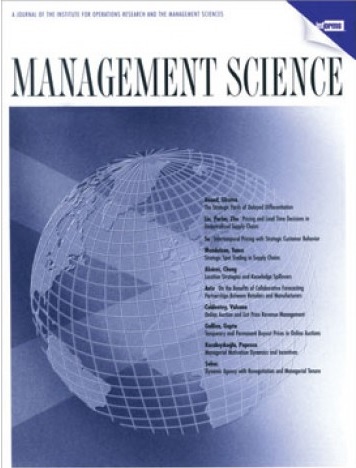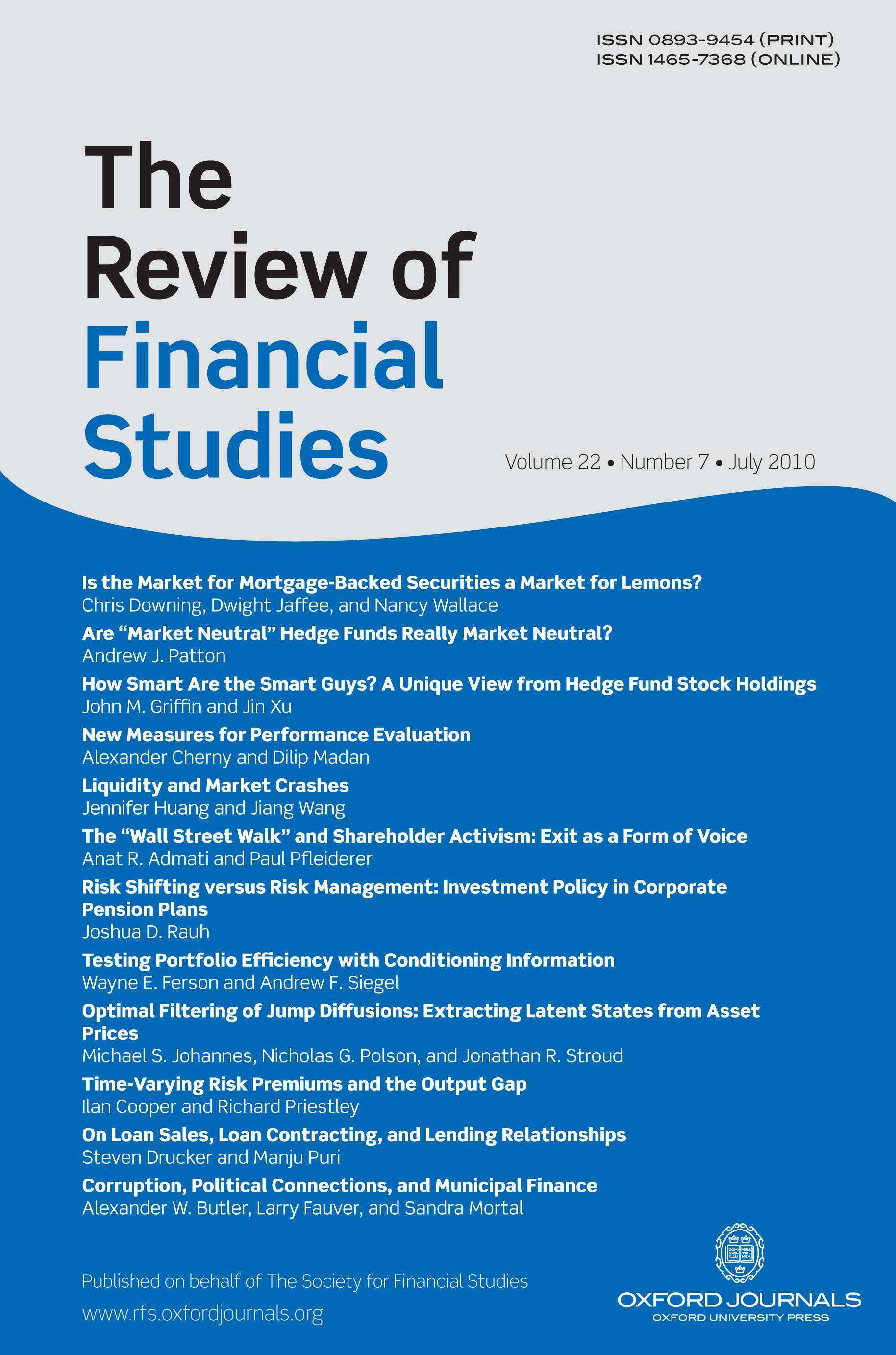Public Capital Markets and Startup Creation
This research group studies the creation of startups with a particular focus on established firms' role as providers of capital and skilled labour for startup creation and growth.
Research Cluster
Economic Dynamics and StabilityYour contact

- Department Laws, Regulations and Factor Markets
Refereed Publications

Asset Allocation in Bankruptcy
in: Journal of Finance, No. 1, 2019
Abstract
This paper investigates the consequences of liquidation and reorganization on the allocation and subsequent utilization of assets in bankruptcy. Using the random assignment of judges to bankruptcy cases as a natural experiment that forces some firms into liquidation, we find that the long-run utilization of assets of liquidated firms is lower relative to assets of reorganized firms. These effects are concentrated in thin markets with few potential users and in areas with low access to finance. These findings suggest that when search frictions are large, liquidation can lead to inefficient allocation of assets in bankruptcy.

Attracting Early-Stage Investors: Evidence From a Randomized Field Experiment
in: Journal of Finance, No. 2, 2017
Abstract
This paper uses a randomized field experiment to identify which start-up characteristics are most important to investors in early-stage firms. The experiment randomizes investors? information sets of fund-raising start-ups. The average investor responds strongly to information about the founding team, but not to firm traction or existing lead investors. We provide evidence that the team is not merely a signal of quality, and that investing based on team information is a rational strategy. Together, our results indicate that information about human assets is causally important for the funding of early-stage firms and hence for entrepreneurial success.

Private Equity and Industry Performance
in: Management Science, No. 4, 2017
Abstract
The growth of the private equity industry has spurred concerns about its impact on the economy. This analysis looks across nations and industries to assess the impact of private equity on industry performance. We find that industries where private equity funds invest grow more quickly in terms of total production and employment and appear less exposed to aggregate shocks. Our robustness tests provide some evidence that is consistent with our effects being driven by our preferred channel.

The Operational Consequences of Private Equity Buyouts: Evidence From the Restaurant Industry
in: Review of Financial Studies, No. 9, 2016
Abstract
How do private equity firms affect their portfolio companies? We document operational changes in restaurant chain buyouts using comprehensive health inspection records. Store-level operational practices improve after private equity buyout, as restaurants become cleaner, safer, and better maintained. Supporting a causal interpretation, this effect is stronger in chain-owned stores than in franchised locations—“twin” restaurants over which private equity owners have limited control. These changes are particularly apparent when private equity partners have prior industry experience. The results suggest that by bringing in industry expertise, private equity firms improve firm operations.

The Impact of Venture Capital Monitoring
in: Journal of Finance, No. 4, 2016
Abstract
We show that venture capitalists' (VCs) on-site involvement with their portfolio companies leads to an increase in both innovation and the likelihood of a successful exit. We rule out selection effects by exploiting an exogenous source of variation in VC involvement: the introduction of new airline routes that reduce VCs' travel times to their existing portfolio companies. We confirm the importance of this channel by conducting a large-scale survey of VCs, of whom almost 90% indicate that direct flights increase their interaction with their portfolio companies and management, and help them better understand companies' activities.
Working Papers

Can Nonprofits Save Lives Under Financial Stress? Evidence from the Hospital Industry
in: SSRN Working Paper, No. 4946064, 2024
Abstract
<p>We compare the effects of external financing shocks on patient mortality at nonprofit and for-profit hospitals. Using confidential patient-level data, we find that patient mortality increases to a lesser extent at nonprofit hospitals than at for-profit ones facing exogenous, negative shocks to debt capacity. Such an effect is not driven by patient characteristics or their choices of hospitals. It is concentrated among patients without private insurance and patients with higher-risk diagnoses. Potential economic mechanisms include nonprofit hospitals' having deeper cash reserves and greater ability to maintain spending on medical staff and equipment, even at the expense of lower profitability. Overall, our evidence suggests that nonprofit organizations can better serve social interests during financially challenging times.</p>

R&D Tax Credits and the Acquisition of Startups
in: IWH Discussion Papers, No. 15, 2023
Abstract
We propose a novel mechanism through which established firms contribute to the startup ecosystem: the allocation of R&D tax credits to startups via the M&A channel. We show that when established firms become eligible for R&D tax credits, they increase their R&D and M&A activity. In particular, they acquire more venture capital (VC)-backed startups, but not non-VC-backed firms. Moreover, the impact of R&D tax credits on firms’ R&D is increasing with their acquisition of VC-backed startups. The results suggest that established firms respond to R&D tax credits by acquiring startups rather than solely focusing on increasing their R&D intensity in-house. We also highlight evidence that startups do not appear to benefit from R&D tax credits directly, perhaps because they typically lack the taxable income necessary to directly benefit from the tax credits. In this context, established firms can play an intermediary role by acquiring startups and reallocating R&D tax credits, effectively relaxing the financial constraints faced by startups.

Going Public and the Internal Organization of the Firm
in: SSRN Working Paper, May 2022
Abstract
We examine how firms adapt their organization when they go public. To conform with the requirements of public capital markets, we expect IPO firms to become more organized, making the firm more accountable and its human capital more easily replaceable. We find that IPO firms transform into a more hierarchical organization with smaller departments. Managerial oversight increases. Organizational functions dedicated to accounting, finance, information and communication, and human resources become much more prominent. Employee turnover is sizeable and directly related to changes in hierarchical layers. New hires are better educated, but younger and less experienced than incumbents, which reflects the staffing needs of a more hierarchical organization. Wage inequality increases as firms become more hierarchical. Overall, going public is associated with a comprehensive transformation of the firm's organization which becomes geared towards efficiently operating a public firm.

Private Equity in the Hospital Industry
in: ECGI Working Paper, No. 787, 2021
Abstract
We examine employment and patient outcomes at hospitals acquired by private equity (PE) firms and PE-backed hospitals. While employment declines at PE-acquired hospitals, core medical workers (physicians, nurses, and pharmacists) increase significantly. The proportion of wages paid to core workers increases at PE-acquired hospitals whereas the proportion paid to administrative employees declines. These results are most pronounced for deals where the acquirers are publicly traded PE-backed hospitals. Non-PE-backed acquirers also cut employment but do not increase core workers or reduce administrative expenditures. Finally, PE-backed acquirers are not associated with worse patient satisfaction or mortality rates compared to their non-PE-backed counterparts.













